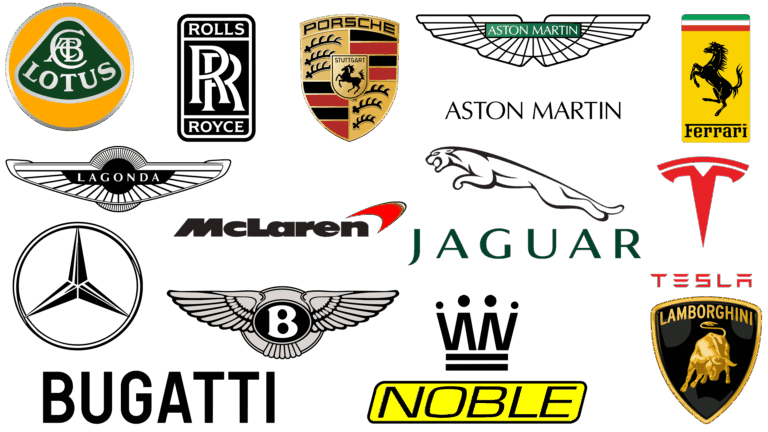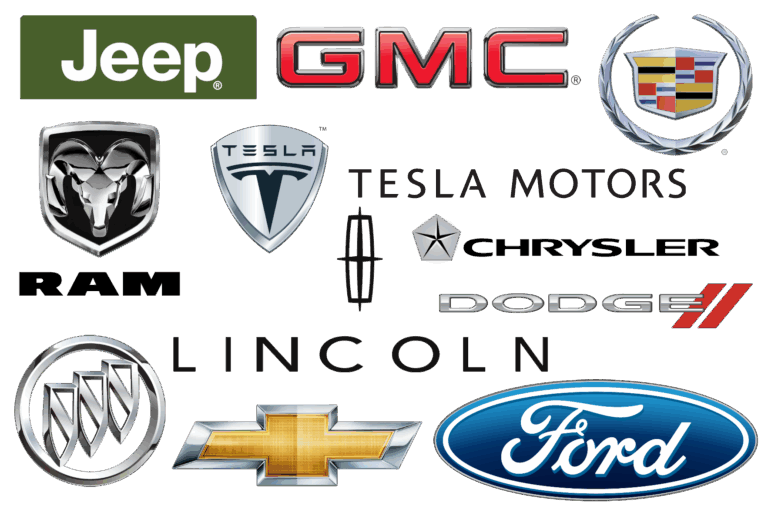The Unseen Orchestra: A Comprehensive Guide to Truck Parts Names
The Unseen Orchestra: A Comprehensive Guide to Truck Parts Names cars.truckstrend.com
The roar of a powerful engine, the glint of chrome under the sun, the sheer scale of a commercial truck – these are the first things that capture our attention. Yet, beneath the impressive exterior lies a complex, intricate network of thousands of individual components, each playing a vital role in the vehicle’s operation, safety, and efficiency. For truck owners, operators, mechanics, and even enthusiasts, understanding the "List Of Truck Parts Names" isn’t merely an academic exercise; it’s a fundamental necessity. This knowledge empowers accurate diagnosis, efficient repairs, informed purchasing decisions, and ultimately, ensures the longevity and reliable performance of these indispensable workhorses.
This article serves as a comprehensive guide, meticulously detailing the major systems and countless components that make up a modern truck. From the microscopic sensors to the massive engine block, we’ll explore the nomenclature, function, and importance of these parts, offering practical insights and actionable advice for navigating the intricate world of truck maintenance and repair.
The Unseen Orchestra: A Comprehensive Guide to Truck Parts Names
I. The Anatomy of a Truck: Major Systems Overview
Before delving into specific components, it’s crucial to understand the overarching systems that govern a truck’s functionality. These systems interact seamlessly to propel the vehicle, ensure safety, and provide comfort for the driver.
- Engine System: The power plant that converts fuel into mechanical energy.
- Drivetrain & Transmission System: Transfers power from the engine to the wheels.
- Chassis & Suspension System: Provides the structural backbone and absorbs road shocks.
- Braking System: Essential for slowing down and stopping the vehicle safely.
- Electrical & Lighting System: Powers all electronic components and ensures visibility.
- Cab & Interior System: The driver’s workspace and control center.
- Exhaust System: Manages engine emissions and noise.
- Steering System: Allows the driver to control the direction of the truck.
- Fuel System: Stores and delivers fuel to the engine.
- Cooling System: Regulates engine temperature.


II. Engine Components: The Heartbeat of the Truck
The engine is arguably the most complex and critical system. Its components are designed for extreme durability and precision.
- Engine Block: The main casting that houses the cylinders, crankshaft, and camshaft.
- Cylinder Head: Sits atop the engine block, containing valves, camshafts (in overhead cam designs), and spark plugs/injectors.
- Pistons: Reciprocating components that move up and down within the cylinders, driven by combustion.
- Crankshaft: Converts the linear motion of the pistons into rotational motion.
- Camshaft: Controls the opening and closing of the engine’s intake and exhaust valves.
- Turbocharger/Supercharger: Forces more air into the engine for increased power.
- Fuel Injectors: Atomize and deliver fuel into the combustion chambers.
- Oil Pan: Reservoir for engine oil.
- Oil Pump: Circulates oil throughout the engine for lubrication.
- Water Pump: Circulates coolant to regulate engine temperature.
- Alternator: Generates electrical power for the truck’s systems and recharges the battery.
- Starter Motor: Engages the flywheel to crank the engine for starting.
- Filters (Oil, Fuel, Air): Crucial for removing contaminants from respective fluids and air, protecting engine components.
- Belts (Serpentine, V-belts): Drive various engine accessories like the alternator, power steering pump, and water pump.
- Hoses: Carry fluids like coolant, oil, and air throughout the engine system.

III. Drivetrain & Transmission: Power to the Wheels
The drivetrain is responsible for transferring the engine’s power to the wheels, allowing the truck to move.
- Transmission (Manual/Automatic): Changes gear ratios to match engine speed and load requirements.
- Components: Gears, shafts, bearings, synchronizers (manual), torque converter (automatic), valve body (automatic).
- Clutch Assembly (Manual): Engages and disengages power from the engine to the transmission.
- Components: Clutch disc, pressure plate, flywheel, release bearing.
- Driveshaft (Propeller Shaft): Connects the transmission to the differential, transmitting rotational power.
- Universal Joints (U-joints): Allow the driveshaft to operate at varying angles.
- Differential: Splits power between the drive wheels, allowing them to rotate at different speeds during turns.
- Axles (Drive Axles): Transmit power from the differential to the wheels.
- Wheel Hubs: Connect the wheels to the axles.
IV. Chassis & Suspension: The Backbone and Ride Comfort
The chassis provides the structural integrity, while the suspension system ensures a stable ride and proper handling.
- Frame Rails: The main structural beams of the truck’s chassis.
- Crossmembers: Connect the frame rails, adding rigidity.
- Leaf Springs: Traditional suspension components, often multi-layered steel springs.
- Air Springs (Air Bags): In air suspension systems, use compressed air to support the load and provide a smoother ride.
- Shock Absorbers (Dampers): Control spring oscillation and absorb road bumps.
- Kingpins: Pivots that connect the steering knuckles to the front axle, allowing the wheels to turn.
- Bushings: Rubber or polyurethane components that cushion connections and reduce vibration.
- U-bolts: Secure leaf springs to the axles.
V. Braking System: Safety First
A truck’s braking system is robust and complex, designed to stop immense weights safely. Most heavy trucks use air brakes.
- Air Compressor: Generates compressed air for the braking system.
- Air Tanks (Reservoirs): Store compressed air.
- Brake Lines (Air Hoses/Pipes): Deliver compressed air to the brake chambers.
- Brake Chambers: Convert compressed air pressure into mechanical force to apply the brakes.
- Slack Adjusters: Automatically or manually adjust the distance between the brake shoes and the drum.
- Brake Shoes/Pads: Friction material that presses against the drums or rotors.
- Brake Drums/Rotors: The rotating components that friction material presses against to create braking force.
- ABS Sensors: Monitor wheel speed to prevent wheel lock-up during braking.
- Brake Valves (Foot Valve, Hand Valve, Relay Valve): Control air flow within the braking system.
VI. Electrical & Lighting: Visibility and Control
From starting the engine to illuminating the road, the electrical system is pervasive.
- Batteries: Store electrical energy to start the engine and power accessories when the engine is off.
- Wiring Harnesses: Bundles of wires that transmit electrical signals and power throughout the truck.
- Electronic Control Modules (ECM/ECU): The "brains" of the truck, controlling engine, transmission, and other systems.
- Headlights, Taillights, Marker Lights: Essential for visibility and compliance.
- Fuses & Relays: Protect electrical circuits and control power flow.
- Sensors (e.g., Temperature, Pressure, Speed): Provide data to the ECM for optimal operation.
VII. Cab & Interior: The Driver’s Command Center
While often overlooked in mechanical lists, these parts are crucial for driver comfort, safety, and control.
- Dashboard/Instrument Panel: Houses gauges, indicators, and controls.
- Steering Wheel: Driver input for steering.
- Driver’s Seat (Air Ride Seat): Designed for long-haul comfort and vibration absorption.
- Mirrors (Side, Convex, Fender): Provide critical rear and side visibility.
- HVAC System (Heating, Ventilation, Air Conditioning): Maintains cabin temperature.
- Switches & Controls: For lights, wipers, cruise control, power windows, etc.
VIII. Exhaust System: Emission Control and Performance
The exhaust system manages engine byproducts and contributes to environmental compliance.
- Exhaust Manifold: Collects exhaust gases from the engine cylinders.
- Turbocharger (part of exhaust path): Utilizes exhaust gases to spin a turbine, which in turn drives a compressor to force air into the engine.
- DPF (Diesel Particulate Filter): Traps soot and particulate matter from exhaust gases.
- SCR (Selective Catalytic Reduction) System: Uses Diesel Exhaust Fluid (DEF) to convert NOx emissions into harmless nitrogen and water.
- Muffler/Resonator: Reduces exhaust noise.
- Exhaust Pipes: Guide exhaust gases from the engine to the tailpipe.
IX. Maintenance & Consumable Parts: Keeping it Running
These parts require regular replacement due to wear and tear or fluid degradation.
- Filters: Oil, Fuel, Air, Cabin Air, Hydraulic.
- Fluids: Engine Oil, Transmission Fluid, Differential Fluid, Coolant, Brake Fluid, DEF.
- Belts & Hoses: Wear out over time due to heat, friction, and age.
- Tires: Crucial for traction, braking, and load bearing.
- Wiper Blades: Essential for visibility in adverse weather.
- Light Bulbs: Headlights, taillights, turn signals, interior lights.
X. The Importance of Knowing Truck Part Names
Understanding the specific names of truck parts offers a multitude of benefits:
- Accurate Communication: Whether speaking to a mechanic, parts supplier, or fellow driver, precise terminology prevents misunderstandings and ensures the correct part is identified.
- Efficient Troubleshooting: Knowing the names helps in systematically diagnosing issues. "My truck is making a squealing noise from the front wheel area when I brake" is far more helpful than "my truck is making a weird noise."
- Informed Purchasing: When buying replacement parts, knowing the exact name, part number, and specifications ensures compatibility and avoids costly errors.
- Understanding Repair Quotes: You can decipher what you’re paying for and question unnecessary charges if you understand the components involved.
- Safety: Properly identified and installed parts are critical for safe operation. Incorrect parts can lead to catastrophic failures.
- Cost Savings: Correct identification reduces trial-and-error, saving time, labor, and the cost of incorrect parts.
XI. Tips for Identifying and Sourcing Truck Parts
- Utilize the VIN (Vehicle Identification Number): This 17-character code is your truck’s unique identifier. It contains information about the manufacturer, model year, engine type, and more, which is invaluable for precise part lookups. Always provide your VIN to parts suppliers.
- Consult the Owner’s Manual/Service Manual: These documents often contain detailed diagrams, part numbers, and maintenance schedules.
- Look for Part Numbers on the Old Part: Many original equipment (OEM) parts have a stamped or stickered part number.
- Take Photos: A picture of the old part, especially if it’s broken, can greatly assist a parts specialist.
- Measure and Describe: For generic components, accurate measurements (length, diameter, thread size) and detailed descriptions are helpful.
- Reputable Suppliers: Purchase parts from authorized dealers or well-known aftermarket suppliers to ensure quality and compatibility.
- OEM vs. Aftermarket:
- OEM (Original Equipment Manufacturer): Parts made by the original manufacturer of your truck or a supplier contracted by them. Generally higher quality and guaranteed fit, but more expensive.
- Aftermarket: Parts made by companies other than the original manufacturer. Can be more affordable, but quality can vary. Research brands and read reviews.
XII. Challenges in Part Identification and Solutions
- Obsolete Parts: For older trucks, specific parts may no longer be manufactured.
- Solution: Search salvage yards, specialized vintage truck parts suppliers, or consider fabrication/rebuilding services.
- Counterfeit Parts: The market is unfortunately plagued by fake parts, especially for popular brands.
- Solution: Purchase from trusted sources, be wary of unusually low prices, and inspect packaging and part quality carefully.
- Cross-Referencing: An OEM part number might have multiple aftermarket equivalents.
- Solution: Reputable parts software and knowledgeable suppliers can cross-reference numbers accurately.
- Specialized Tools/Knowledge: Some parts require specific tools or expertise for identification or installation.
- Solution: Don’t hesitate to consult with experienced mechanics or diagnostic services.
Illustrative Truck Parts Price Table
Please note: The prices listed below are highly illustrative and subject to significant variation based on truck make, model, year, part brand (OEM vs. aftermarket), supplier, geographic location, and market conditions. They are provided to give a general idea of cost ranges.
| Part Name | System | General Function | Illustrative Price Range (USD) |
|---|---|---|---|
| Oil Filter | Engine | Removes contaminants from engine oil | $15 – $50 |
| Fuel Filter | Engine / Fuel | Filters impurities from fuel | $20 – $80 |
| Air Filter | Engine | Filters air entering the engine | $40 – $150 |
| Alternator | Electrical | Generates electricity, recharges battery | $200 – $800 |
| Starter Motor | Electrical | Cranks the engine to start it | $150 – $600 |
| Brake Shoe Set (Axle) | Braking | Friction material for drum brakes | $80 – $250 |
| Brake Drum | Braking | Rotating surface for brake shoes | $150 – $400 |
| Air Dryer Cartridge | Braking | Removes moisture from air brake system | $50 – $150 |
| Shock Absorber | Suspension | Dampens spring oscillation, absorbs bumps | $50 – $150 |
| Leaf Spring (single) | Suspension | Supports load, provides suspension | $200 – $600 |
| Water Pump | Cooling | Circulates coolant to prevent overheating | $100 – $400 |
| Fuel Injector (single) | Engine / Fuel | Atomizes and delivers fuel to cylinders | $150 – $600+ |
| Turbocharger | Engine | Increases engine power by forcing air | $800 – $3,000+ |
| ECM (Engine Control Module) | Electrical | Computer that controls engine operation | $500 – $3,000+ (often re-man) |
| Driveshaft U-joint | Drivetrain | Allows driveshaft flexibility | $30 – $100 |
| Clutch Kit (Heavy Duty) | Drivetrain | Engages/disengages engine power to transmission | $500 – $1,500+ |
| Truck Tire (Commercial) | Wheels | Provides traction, supports load | $200 – $700+ |
| LED Headlight Assembly | Electrical | Illuminates road ahead | $100 – $500+ |
Frequently Asked Questions (FAQ)
Q1: Why is it important to know truck part names?
A1: Knowing truck part names is crucial for accurate communication with mechanics and suppliers, efficient troubleshooting, informed purchasing decisions, understanding repair quotes, ensuring safety, and ultimately saving time and money on maintenance and repairs.
Q2: Where can I find my truck’s VIN?
A2: The VIN (Vehicle Identification Number) is typically located on the driver’s side dashboard (visible through the windshield), on the driver’s side door jamb, or on the truck’s registration and insurance documents.
Q3: What’s the difference between OEM and aftermarket truck parts?
A3: OEM (Original Equipment Manufacturer) parts are made by or for the original truck manufacturer, offering guaranteed fit and often higher quality, but at a higher price. Aftermarket parts are produced by other companies and can be more affordable, but their quality can vary.
Q4: How do I know if a part is compatible with my specific truck model?
A4: Always provide your truck’s VIN when purchasing parts. The VIN contains all the necessary information to ensure compatibility. Additionally, consult your truck’s owner’s manual or a reputable parts catalog specific to your make and model.
Q5: Can I use car parts on a truck?
A5: Generally, no. Trucks, especially commercial heavy-duty trucks, are designed to handle immense loads and operate under strenuous conditions. Their parts are engineered differently, often much larger and more robust, to withstand these demands. Using car parts would be unsafe and lead to premature failure.
Q6: What are some common consumable parts that require regular replacement?
A6: Common consumable parts include oil filters, fuel filters, air filters, cabin air filters, engine oil, transmission fluid, coolant, brake fluid, DEF (Diesel Exhaust Fluid), belts, hoses, tires, and wiper blades. These are part of routine maintenance schedules.
Q7: How can I avoid buying counterfeit truck parts?
A7: To avoid counterfeit parts, always purchase from authorized dealers, reputable aftermarket suppliers, or well-established parts distributors. Be skeptical of prices that seem too good to be true, and inspect the packaging, branding, and quality of the part carefully.
Conclusion
The world of truck parts is vast and intricate, a testament to the engineering marvel that is a modern commercial vehicle. Far from being just a "list of names," each component represents a critical function, a piece of a meticulously designed puzzle that enables the truck to perform its essential duties. By investing the time to understand this complex ecosystem, from the engine’s internal workings to the nuances of the braking system, truck owners and operators gain invaluable knowledge. This understanding translates directly into enhanced safety, improved efficiency, reduced downtime, and significant cost savings over the lifetime of the vehicle. Ultimately, knowing your truck’s parts is not just about maintenance; it’s about empowering yourself to keep these giants of the road rolling reliably, safely, and profitably for years to come.





